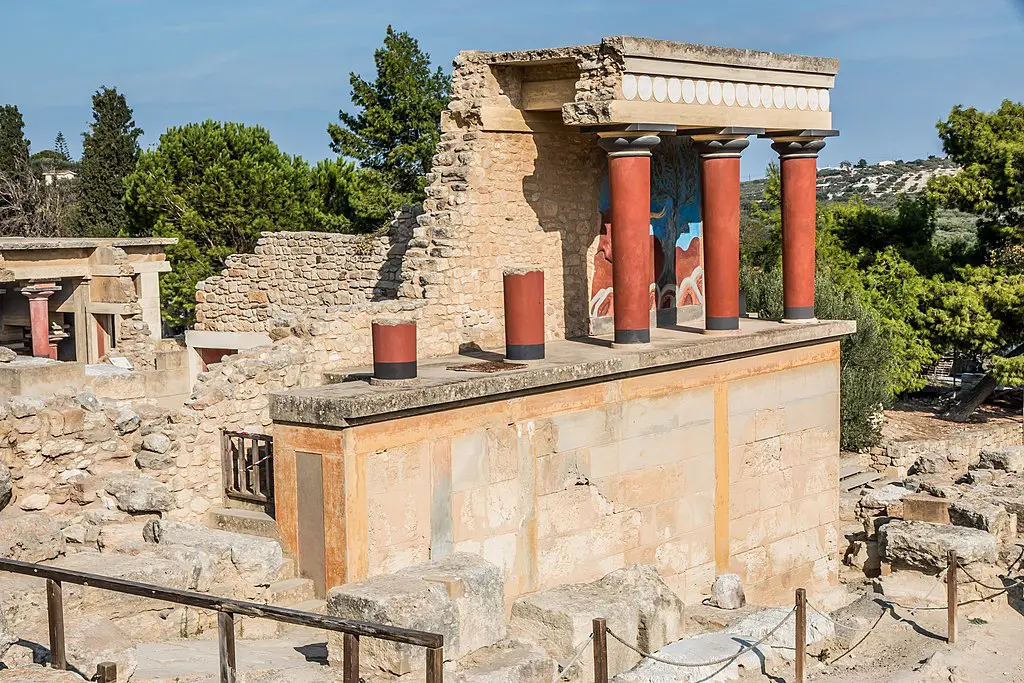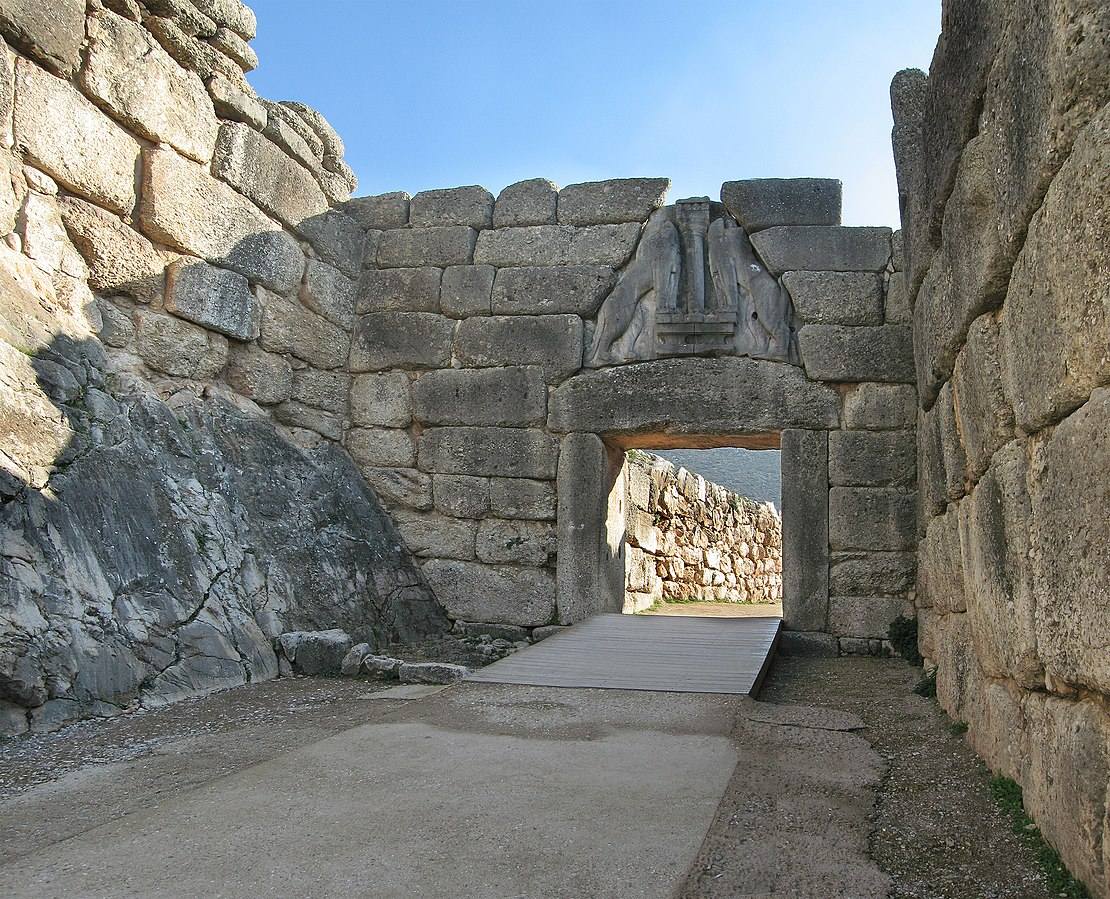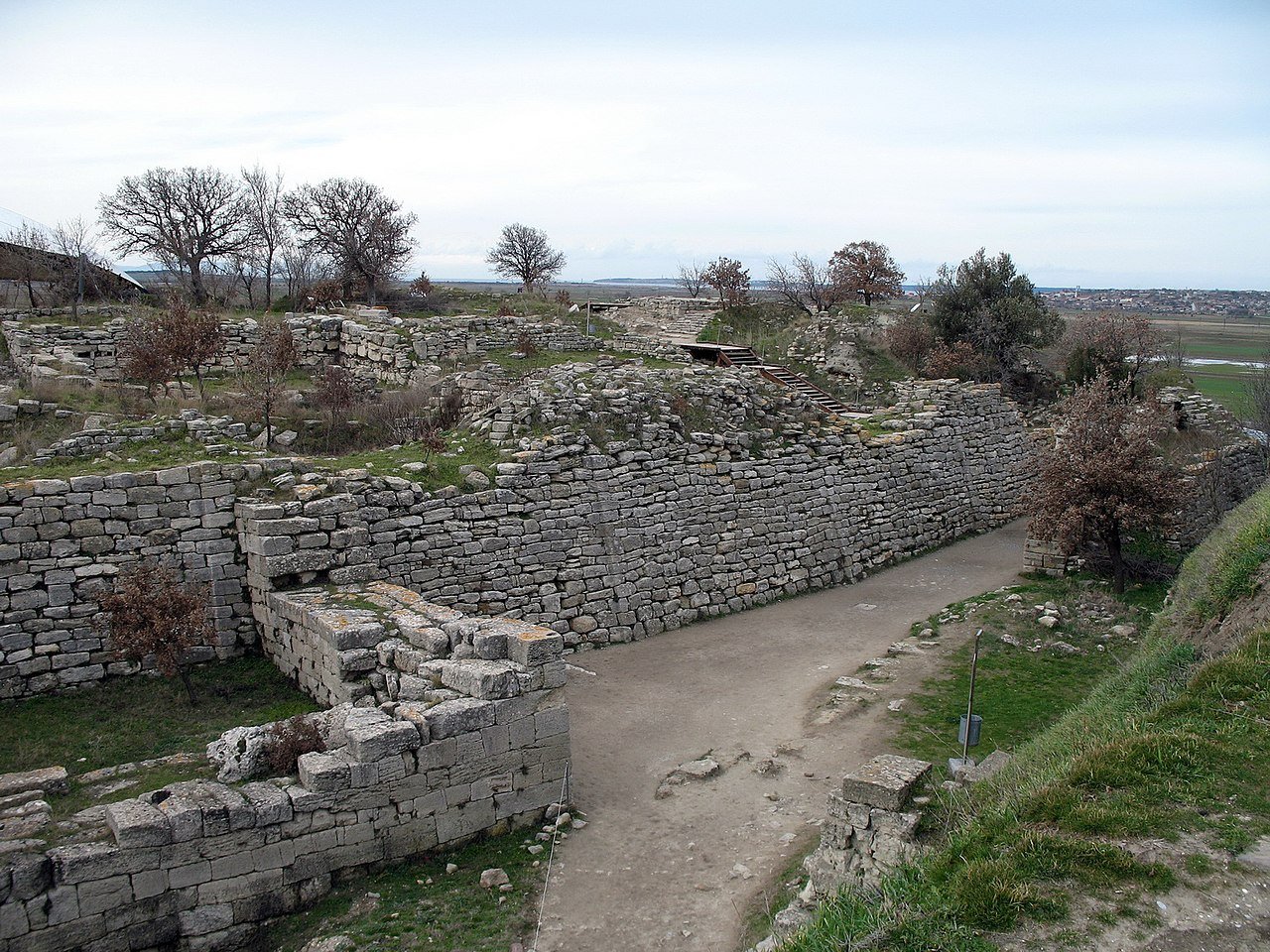
The Bronze Age in ancient Greece was a pivotal era that laid the foundation for the rich tapestry of Hellenic (Greek) civilization. A period marked by technological advancements, cultural achievements, and intricate social structures, the Bronze Age witnessed the emergence of influential city-states that shaped the course of history.
From the legendary Mycenae, steeped in the myths of Agamemnon and the Trojan War, to the maritime prowess of Pylos and the cultural hub of Knossos on the island of Crete, these cities represent the vibrant mosaic of ancient Greek civilization.
Mycenae

Mycenae, a pivotal Bronze Age site in Greece, stands as a testament to the Mycenaean culture. Its mythological roots attribute its founding to Perseus. The site gained prominence in the late 19th century through Heinrich Schliemann’s extensive excavation, unearthing significant remains for study. Serving a pivotal role in classical Greek culture, this ancient city boasts a Bronze Age acropolis strategically positioned between the hills known today as Profitis Ilias and Mount Sara.
Mycenaean construction, influenced by Minoan traditions, exhibits notable innovations in fortification walls. The walls, a blend of ashlar and cyclopean masonry, began being constructed in the 14th century and were later expanded. The Lion Gate, an engineering marvel, showcases rearing lions in stone relief. Military ingenuity is evident in features like spur walls and a subterranean passageway designed for tactical advantage.

Beyond the walls, Mycenae’s residential area featured Grave Circle B, predating Circle A, and dome-shaped tholos tombs, notably the Treasury of Atreus (Tomb of Agamemnon). Abandoned over two thousand years ago, Mycenae’s legacy endures through its architectural marvels and cultural significance.
Knossos
Panoramic view of the palace of #Knossos. © Konstantinos Tsakalidis #Crete pic.twitter.com/Ab8vlVDtHr
— madame connasse (@EaO4TeFy3w50ZrT) November 26, 2023
Located on the island of Crete, Knossos was the center of the Minoan civilization, characterized by its advanced architecture and sophisticated culture. The largest of the Bronze Age Minoan palaces on Crete, it is of pivotal importance to ancient Greek history. Discovered and extensively excavated by Arthur Evans beginning in 1899, Knossos revealed the complex civilization of the Minoans.
ca. 3,400 year old Minoan fresco known as 'La Parisienne'
from Palace Knossos #Crete probably wall Sanctuary Hall pic.twitter.com/YXCE7lrkDj— Ticia Verveer (@ticiaverveer) May 30, 2016
Its origins date back to around 1900 BC. It experienced destruction due to an earthquake around 1700 BC and was subsequently rebuilt. This architectural marvel, sprawling and lacking fortification, displayed a central court, intricate walkways, and rooms with specific functions. Its distinctive single columns and vivid frescoes, such as the “Minoan Lady” (also known as La Parisienne) and scenes like “bull vaulting,” showcase Minoan artistic prowess.
Thebes

Thebes, situated in Central Greece, emerged as one of the paramount cities of ancient Greece during the Bronze Age. This city gained legendary status as the seat of the mythical king Oedipus, who, according to Greek legends, unwittingly killed his father and married his mother.
Thebes served as the backdrop for numerous ancient Greek tragedies, including works by Aeschylus and Sophocles. The city’s significance was further underscored by the construction of the celebrated seven-gated wall attributed to Amphion, who, according to legends, enchanted stones into movement with his lyre.
Figurine of a female covered by the himation and a conical hat with wide brim; first half of 3rd Century BC.
Archaeological Museum of Thebes, Greece#archaeohistories pic.twitter.com/YzFMmOVwn9
— Archaeo – Histories (@archeohistories) August 8, 2022
During the Bronze Age, Thebes played a crucial role as a center of civilization in ancient Greece. The renowned ancient citadel, Cadmea, was established during this time and was attributed to Cadmus, brother of Europa. Cadmea’s construction is indicative of the city’s advanced architectural achievements during the Bronze Age.
Thebes’ zenith was in the 4th century BC under the military leadership of Epaminondas, who invaded the Peloponnese and secured Theban dominance. However, a swift decline followed, and Thebes eventually fell under Macedonian control, enduring further periods of prosperity, decline, and reconstruction.
Pylos
Pylos, located in the southwestern part of the Peloponnese, was a significant center during Bronze Age Greece. It gained prominence as a major Mycenaean city and played a crucial role in shaping the political and cultural landscape of the time.
One of the most notable features of Pylos during the Bronze Age was the discovery of the Palace of Nestor. The palace, highlighted in the tale of the Trojan War, is referenced by Homer in the Odyssey. Telemachus “went to Pylos and to Nestor, the shepherd of the people,” where he was offered a “kindly welcome.”
This palace complex, unearthed by archaeologist Carl Blegen in the 1930s, provided valuable insights into Mycenaean civilization. The tablets found at this site contained inscriptions in Linear B, an early form of Greek writing, which has been instrumental in deciphering the Mycenaean script.
3D Reconstruction – Megaron with sacred fireplace at the Palace of Nestor, 1250 B.C. Pylos; ancient Mycenaean Greek site. Credit: https://t.co/CykoiPPeGZ pic.twitter.com/wPTikAMENY
— Archaeology & Art (@archaeologyart) November 17, 2020
The Palace of Nestor is often associated with the legendary figure Nestor, a character in Homer’s epics, the Iliad, and the Odyssey. Its architectural layout and the artifacts discovered within its walls reflect the advanced civilization and administrative capabilities of Mycenaean Pylos.
Pylos was also a key player in the political landscape of the time, engaging in trade and diplomatic relations with other Mycenaean cities and cultures in the Eastern Mediterranean.
Troy, Important Bronze Age Trade Center

Troy, situated in modern-day Turkey and historically linked to the Bronze Age Greek world, was of immense contemporary significance. It is renowned for its central role in the Trojan War, as immortalized by Homer in the Iliad.
The city’s prominence is deeply rooted in the epic narrative of the Trojan War, during which it was the focal point of the conflict between the Greeks and Trojans. The legendary tale, narrated by Homer, features iconic figures such as Achilles, Hector, and Odysseus, creating a narrative that transcends historical reality.
Troy’s strategic location at the crossroads of noteworthy trade routes and its proximity to the Dardanelles Strait made it a crucial center for commerce and cultural exchange during the Bronze Age. The city’s fortifications, including its famous walls, stand as a testament to its role as a stronghold and hub for diplomatic and economic activities.
See all the latest news from Greece and the world at Greekreporter.com. Contact our newsroom to report an update or send your story, photos and videos. Follow GR on Google News and subscribe here to our daily email!



